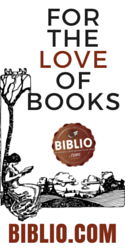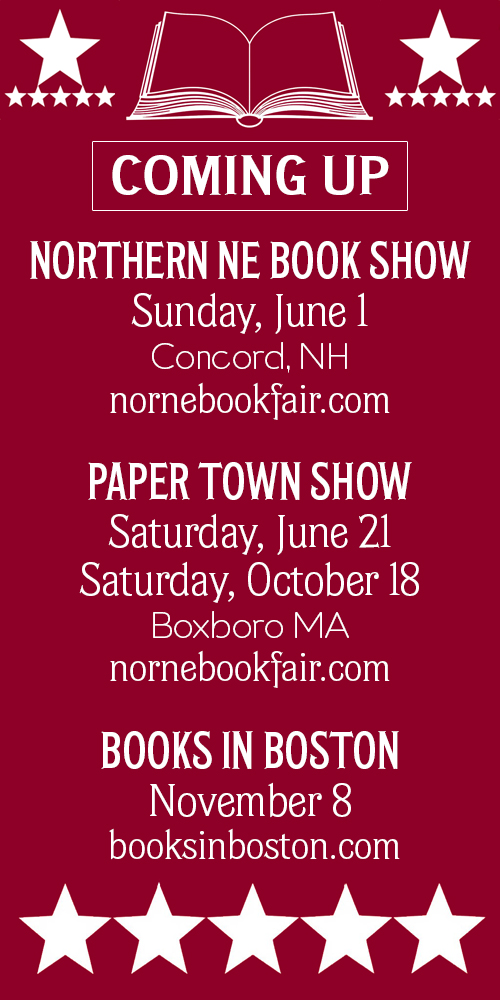Cooperstown & Notes from the Garden
We've attended the Cooperstown Antiquarian Book Fair many times over the years – primarily to promote Book Source Magazine, organize book-signings for BSM writers, scout for books for ourselves, catch up with old friends, and to simply hang out for a day or so in one of the most interesting and attractive villages in the region. It's also close by.
Not having participated in a book fair (as a bookseller) for many years, I wasn't sure how to prepare, since I hadn't personally experienced the change brought about by the public's paradigm shift in buying habits. But thanks to some good advice from an old friend and colleague, we sold more than at any book fair we'd previously participated in, even though we brought a small fraction of what we would have done in the past. Almost everything that could be searched for (and found) on a smart phone was left behind in Cazenovia, much to the visible frustration of browsers with iPhones in hand. Mostly rare books, broadsides, early pamphlets, letters, historical documents, and so forth. I'm sure we had the smallest exhibit at Cooperstown that day, which made packing up a matter of minutes.
Another highlight was the wonderful Friday evening dinner that book fair organizers Mary Brodzinsky and Will Monie had arranged at Origins Cafe, located inside a redesigned greenhouse on the grounds of a family-owned nursery about a mile from the village. Tables for four surrounded by citrus and other tropical and sub-tropical vegetation, water fountains, and after dinner readings by Charles Plymell, one of the last of the Beat poets, all made for a memorable occasion. God willing and if the creek don't rise, we plan on being there next year.
*
Some of you remember the old-fashioned paper and print version of this magazine and how in the editorial section I'd sometimes add a little space-filler in the form of “Notes from the Garden”. Oddly enough some people actually looked forward to these self-indulgent ramblings from left-field – and so encouraged, I kept it up until our next to last print issue of March/April 2013. Since I'm out of practice, please bear with me.
2017 has been one of my strangest gardening years so far – not just for me, obviously, but for practically everybody in our neck of woods. The heavy rains and winds over the fourth of July weekend flooded our gardens, did away with part of our driveway and caused some other damage, but thanks to help from our two daughters, two grand-daughters and a neighbor, things were put right in relatively short order. Other people were not so lucky and fared much worse.
The nearly three months of too much rain and cooler than normal temperatures is but a minor inconvenience especially when compared to 1816, the ‘year without a summer’, when frosts or hard freezes every month of the year, including the entire growing season, caused wide-spread food shortages and famine-like conditions throughout much of the Northern Hemisphere. That year was also towards the end of four or five hundred years of global cooling that effectively wiped out the farming communities in Greenland started by Viking settlers during the tenth century.
Our gardening year so far has meant a lot of catch-up work – working twice as hard and twice as fast whenever favorable conditions permit – meaning when it's not raining or the ground has dried up enough so you can see the tops of your shoes. And at my age, that's not easy.
Our garden, or gardens, consist of five raised beds (for vegetables), about a dozen ornamental beds (borders or centered ovals, given over to combinations of perennials and/or massed annuals, and a traditional grade level vegetable garden. The lemon trees have not been as productive this year (possibly diseased) but our fig tree is loaded with developing fruit. The last week and a half has seen some improvement so we can hope for a fine end of summer display.
The one thing that continues to influence my own gardening efforts is to work towards eliminating the distinction between ornamental (mainly floral) and vegetable gardening. One of the most interesting and attractive garden displays I've ever seen was many years ago in Montreal and if I remember correctly it was created entirely with egg plants, chard, tomatoes, varieties of peppers, and other plants I can only vaguely recall. I make a big deal of this because in casual conversations when the topic of gardening comes up, I'm always amazed how men sometimes pointedly mention that although they do have a vegetable garden, anything to do with flowering plants or other ornamentals is left to their wives. Whether this tendency to protest too much is due to insecurity, I'll leave to others to decide. I find that nowadays the same defensive attitude also pervade politics – some people find it easier to strike a socially acceptable political pose rather than do any serious reading, thinking or reflecting.


























